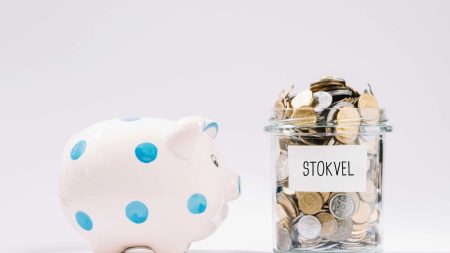Shopping has become more convenient than ever. With just a swipe of a card, you can buy just about anything. But this convenience comes with a price — credit shopping often leads to debt, high-interest payments, and a cycle of financial stress. This is where lay-by comes in: a smart, debt-free alternative that allows you to save more while getting the items you need.
What is Lay-By Shopping?
Lay-by is a simple, straightforward payment plan where you reserve an item at a store by paying a small deposit upfront and then make regular payments over a set period, typically three to six months.
Once you’ve paid the full amount, the store releases the product to you. Unlike credit shopping, you don’t get the item immediately, but the benefit is clear: no debt, no interest charges, and no risk of defaulting on a loan.
Read More: Costly Money Mistakes You Can’t Afford to Keep Making
Why Lay-By is Better Than Credit Shopping
1. No Interest Payments
With credit shopping, you pay interest on the items you buy if you can’t settle the full balance at the end of the month. This can make even affordable items more expensive in the long run. With lay-by, there’s no interest. You pay the item’s original price without any added costs.
2. Debt-Free Shopping
One of the biggest downsides of credit shopping is the potential to rack up debt. Once you start relying on credit, it can be easy to overspend and fall into a cycle of owing money. Lay-by shopping helps you avoid this. You only pay for what you can afford, and there’s no risk of accumulating debt.
3. Budget-Friendly
Lay-by allows you to pay for big-ticket items in smaller, more manageable amounts. This makes it easier to budget and save without the pressure of settling large bills at once. It’s particularly helpful for people in LSM 1-7, where managing income and expenses carefully is key to financial stability.
4. Encourages Saving
When you use lay-by, you’re essentially saving for the item you want over a period. Instead of using credit to make a purchase and paying later, you save first and pay for it in installments, which builds better money management habits.
5. No Credit Checks Required
Unlike credit shopping, where approval depends on your credit score, lay-by doesn’t require a credit check. This makes it accessible to a broader range of consumers, including those with poor credit histories or no credit score at all.
How it Works in South Africa
Plans are widely available in South Africa, especially in retail stores that sell clothing, appliances, furniture, and electronics. The process is simple and follows these steps:
- Choose Your Item: Pick the item you want to buy. It could be a new appliance, school clothes for your kids, or even a new piece of furniture for your home.
- Pay a Deposit: Most stores require a deposit of around 10-20% of the item’s price. This ensures that the item is reserved for you.
- Make Regular Payments: You’ll make weekly or monthly payments based on what you can afford. These payments are made over a period of two to six months, depending on the store’s lay-by policy.
- Collect Your Item: Once the total amount has been paid, you can collect your item and take it home.
Benefits for Low-Income Consumers
For people in lower-income groups, this provides a safe, reliable way to purchase necessary goods without taking on debt. Here’s why this payment method is particularly beneficial:
1. Affordability
For households with limited income, it can be challenging to save enough money in one go to buy larger items, like furniture or appliances. Lay-by lets consumers spread the cost of these purchases over time, making it more affordable.
2. Flexibility
Lay-by offers a degree of flexibility. You can make payments according to your own schedule, provided you meet the agreed-upon deadlines. This allows you to budget more easily while still working towards owning an item you need.
3. No Penalties for Late Payments
In most cases, lay-by agreements do not penalize consumers for missed payments as long as you eventually make up the missed installment. This contrasts with credit shopping, where missed payments can result in hefty fees, interest, and a negative impact on your credit score.
4. Money-Back Guarantee
Should you decide that you no longer want the item before the final payment is made, many stores allow you to cancel the lay-by and refund your money. This can be particularly helpful if your financial situation changes, allowing you to maintain flexibility.
Lay-By Shopping: Perfect for Special Occasions
Lay-by shopping is ideal for situations where you don’t need the item immediately but want to save up over time. Some common examples include:
- School Supplies and Uniforms: Parents can put school uniforms and supplies on lay-by months before the school year starts, spreading the cost over several months and avoiding last-minute panic buying.
- Holiday Shopping: Many families start their holiday shopping early by putting gifts and festive items on lay-by. This way, when the holiday season arrives, they’ve already paid for everything, allowing for a debt-free festive season.
- Home Renovations and Appliances: Planning to renovate your home or buy a new appliance? Lay-by offers the option to pay for large purchases like fridges, stoves, or couches over time, giving you flexibility without breaking your budget.
More Tip: Simple Ways to Save Money on Groceries in South Africa
Tips for Using Lay-By Effectively
While lay-by is a great tool for managing your money, it’s important to approach it wisely. Here are some tips to help you get the most out of lay-by shopping:
1. Choose Reliable Retailers
Make sure to use lay-by at well-established stores with clear lay-by policies. Read the terms and conditions before signing an agreement, and make sure there’s a reasonable time frame for making payments.
2. Stick to a Budget
Only put items on lay-by that you know you can afford to pay off within the time frame. Avoid committing to multiple lay-by purchases at once, as this can strain your budget and make it difficult to keep up with payments.
3. Keep Track of Payments
Stay on top of your lay-by payments. Most stores will give you a lay-by card or receipt showing your payment history and how much you still owe. Keep this in a safe place, and make sure you don’t miss any payments.
4. Plan for Special Occasions in Advance
Whether it’s back-to-school shopping or preparing for the holidays, planning ahead allows you to use lay-by effectively. You’ll have enough time to make all your payments and be ready for special occasions without stress.
5. Don’t Overextend Yourself
It’s easy to get carried away and put too many items on lay-buy, thinking that small payments won’t add up. Be careful not to overextend yourself financially, and stick to the most important purchases.
Lay-buy shopping offers an affordable, stress-free alternative to credit shopping, allowing you to save money and avoid debt. By spreading the cost of your purchases over time without the pressure of interest or credit card debt, you can take control of your finances and plan ahead for big purchases.
Next time you’re tempted to use credit for a big purchase, consider using lay-by instead. It’s a budget-friendly option that puts you in control of your spending, helping you stay debt-free while still getting the items you need.










